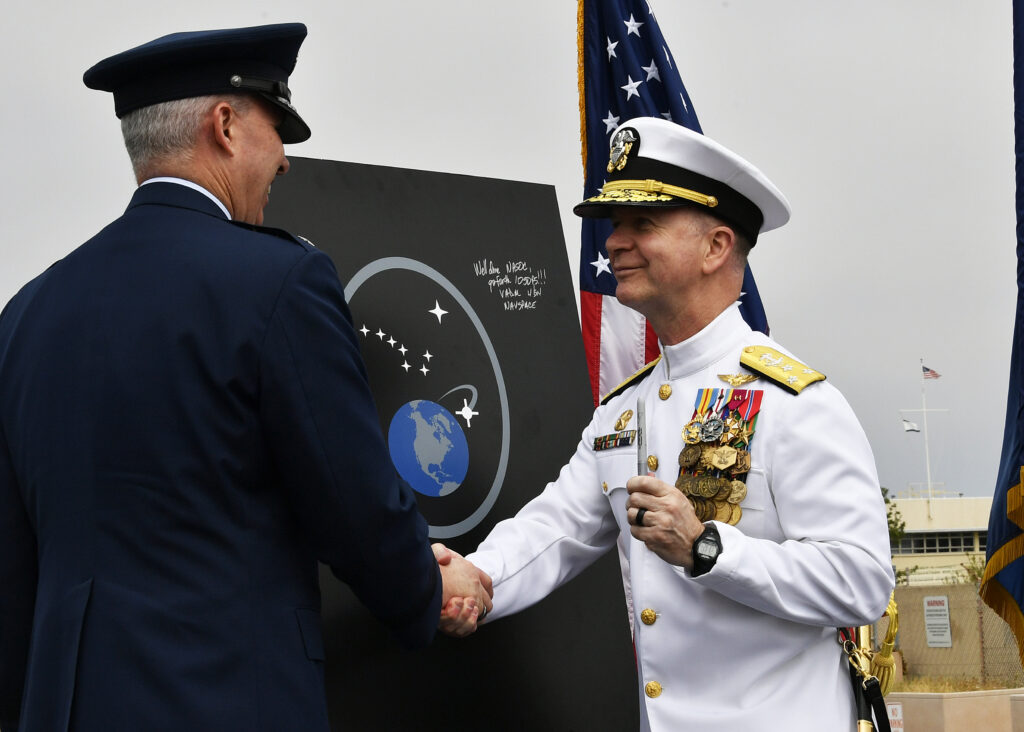
POINT MUGU — Naval Satellite Operations Center, onboard Naval Base Ventura County, transferred to the U.S. Space Force under Space Delta 8 and was designated as the 10th Space Operations Squadron during a historic Disestablishment and Assumption of Command Ceremony June 6, said Naval Base Ventura County Public Affairs in a June 8 release.
Vice Adm. Ross Myers, commander of U.S. Fleet Cyber Command and U.S. 10th Fleet, presided over the ceremony.
“For 60 years NAVSOC has advocated and advanced American maritime superiority,” said Myers. “NAVSOC enabled satellite communications to afford the United States and her allies the crucial ability to provide defensive measures, conduct over the horizon monitoring and targeting, and project combat power in areas of conflict and instability around the globe.”
NAVSOC was the first military space operations command in history, commissioned in April 1962 as the Navy Astronautics Group. Tasked with operating the Navy’s satellites, the unit commanded TRANSIT, the world’s first satellite navigation system. Navy Astronautics Group was re-designated as NAVSOC in June 1990.
“As we look toward the future of space operations, we see the domain is both crowded and growing,” said Myers. “To lead this next phase of the space race, the United States established the Space Command with the budget and authorities to consolidate joint-capabilities and harness cross-cutting disciplines and services.”
The Space Force is a separate and distinct branch of the armed services, organized under the Department of the Air Force in a manner very similar to how the Marine Corps is organized under the Department of the Navy.
“It’s hard to overstate how impactful this mission is and the critical role this team plays in linking the force across air, land, and sea,” said U.S. Space Force Lt. Gen. Stephen Whiting, commander, Space Operations Command. “This activation marks the beginning of the Department of Defense’ consolidation of all narrow-band, wide-band, and protected SATCOM to include all associated responsibilities for training, acquisition, and sustainment activities under a single military service for the first time in history.”
In addition to the command operation center, NAVSOC transferred the Laguna Peak Facility (three miles from the Point Mugu), which supports the Space-Ground Link System and satellite TT&C operations, and 13 satellites to include 1-FLTSAT, 5-UFO, 5-MUOS and 2-POLAR.
According to Space Delta 8, the new unit is intentionally numbered the 10th Space Operations Squadron to pay honor to its heritage under U.S. 10th Fleet.
“Space has become highly contested,” said U.S. Space Force Col. Matthew Holston, commander, Space Delta 8. “Our adversaries recognize our reliance on space, and they are actively seeking ways to create vulnerabilities to take away our competitive advantage. It is the 10th Space Force Operation Squadron that is on the front lines to guaranteeing our American way of life.”
The Space Force is expected to grow from 2,400 active-duty service members to 6,400 by the end of the year, according to a statement made by Chief of Space Operations Gen. John Raymond.
“Today we complete the first chapter in military space operations,” said Myers. “Our military stands better connected, more informed, faster, and able to operate with greater precision because of NAVSOC.”






